What is an Air Cooler Motor?
An air cooler motor is the core power component of an air cooler, responsible for driving the fan blades and water pump (in evaporative air coolers) to operate. Its primary function is to convert electrical energy into mechanical energy, enabling the air cooler to achieve air circulation, heat exchange, and humidity regulation.
In terms of design, air cooler motors are developed with efficiency and durability as core principles. Efficiency ensures that the motor can drive the equipment to deliver sufficient air volume while consuming less energy; durability is reflected in its ability to operate stably for long hours in harsh environments (such as high humidity or dusty conditions). In appearance, they are usually compact and lightweight, with a sealed casing to prevent dust and moisture intrusion, which is crucial for maintaining stable operation.
In the field of cooling equipment, air cooler motors occupy a pivotal position. Whether it is household evaporative air coolers, industrial exhaust fans, or commercial air conditioning systems, they all rely on high-performance motors to function. With the increasing demand for energy-saving and environmentally friendly cooling solutions, the market demand for efficient, low-power air cooler motors is growing steadily.
What are the Core Advantages of Air Cooler Motors?
(I)High Efficiency and Energy Saving
Modern air cooler motors use advanced electromagnetic design and precision manufacturing processes to significantly improve energy conversion efficiency. Compared with traditional motors, the efficiency can be improved by 15%-25% at the same power output.
For example, a 1.5 kW high-efficiency air cooler motor running 8 hours a day can save about 10-15 kWh of electricity per month compared to ordinary motors. Over long-term use, the accumulated energy savings are considerable.
In terms of speed regulation, many air cooler motors are equipped with stepless speed regulation or multi-speed regulation. Users can adjust the motor speed according to the actual cooling needs to avoid energy waste caused by continuous high-power operation. This flexibility can not only meet different cooling needs, but also further reduce energy consumption.
(II)Durability and Stability
The durability of the air cooler motor is due to high-quality materials and strict production standards. The stator and rotor cores are made of high-grade silicon steel sheets, which can reduce iron loss and improve magnetic permeability; the windings are made of high-temperature resistant enameled wire, which can withstand operating temperatures up to 130°C and effectively avoid insulation aging caused by heat accumulation.
In terms of structural design, key components such as bearings are made of well-known brands with strong wear resistance. The sealed bearing design can prevent dust and moisture from invading, ensuring that the air cooler motor can operate stably even in a humid environment. Under normal use and maintenance, the service life of the air cooler motor can reach 8-10 years, which can greatly reduce the frequency and cost of replacement.
(III)Low Noise and Environmental Adaptability
Noise control is a significant advantage of modern air cooler motors. Through optimized rotor dynamic balance design and the use of silent bearings, the operating noise can be controlled below 55 decibels, which is equivalent to the sound of a normal conversation, ensuring a quiet environment during use.
In terms of environmental adaptability, air cooler motors perform well in various conditions. They can operate stably in a temperature range of -10°C to 45°C and a relative humidity of up to 90% (non-condensing), making them suitable for both dry inland areas and humid coastal regions. Additionally, their corrosion-resistant casings and anti-rust treatments allow them to be used in industrial workshops with mild corrosive gases, expanding their application scope.
What are the Key Technical Parameters of Air Cooler Motors?
(I)Basic Performance Parameters
1.Power Rating: The power of air cooler motors varies according to the type of air cooler. Small household air coolers typically use 0.5-1.5kW motors; commercial air coolers (such as those used in shopping malls or offices) require 1.5-3kW motors; industrial air coolers, which need to drive large fan blades, may use motors with power exceeding 5kW.
2.Speed: The speed of air cooler motors directly affects the air volume of the air cooler. Common speeds include 1400rpm (four-pole motor) and 2800rpm (two-pole motor). Some motors support multi-speed adjustment (e.g., low/medium/high speeds of 800rpm, 1200rpm, and 1600rpm), allowing users to adjust air volume as needed.
3.Voltage and Frequency: Most air cooler motors use single-phase 220V or three-phase 380V power supplies, with a frequency of 50Hz (or 60Hz for specific regions). It is crucial to select a motor that matches the local power supply parameters to avoid damage due to voltage mismatch.
4.Efficiency Class: According to international standards (such as IE standards), air cooler motors are divided into different efficiency classes, such as IE1 (standard efficiency), IE2 (high efficiency), and IE3 (premium efficiency). High-efficiency motors have higher energy-saving potential and are more in line with environmental protection requirements.
(II)Structural and Operational Parameters
1.Protection Class: The protection class of air cooler motors is usually IP44 or IP54. IP44 means the motor is protected against solid objects larger than 1mm and splashing water; IP54 adds protection against dust ingress, making it suitable for dusty environments such as factories.
2.Insulation Class: Most air cooler motors use Class B or Class F insulation. Class B insulation can withstand a maximum temperature of 130°C, while Class F can reach 155°C, ensuring safe operation even in high-temperature environments.
3.Weight and Dimensions: The weight of small air cooler motors is generally 3-8kg, with dimensions (length × diameter) of approximately 150-250mm × 100-150mm; large industrial motors can weigh over 20kg, with larger dimensions to match high-power output.
4.Mounting Type: Common mounting types include flange mounting and base mounting. Flange mounting is suitable for integrating the motor with the air cooler's fan frame, while base mounting is more flexible for industrial equipment.
What are the Application Scenarios of Air Cooler Motors?
(I)Household and Commercial Evaporative Air Coolers
In various scenes of daily family life, the motor of the air cooler plays a vital role. It strongly drives the fan blades to rotate at high speed, so as to effectively suck the hot and unbearable air in the room into the air cooler. Then, the hot air flows through the moist curtain, and in the process, it undergoes efficient heat exchange, and finally transforms into fresh and cool cold air, which is blown out slowly, bringing a touch of coolness to the family. It is worth mentioning that the design of these air cooler motors pays special attention to the characteristics of low noise and energy saving and environmental protection. Whether in a quiet bedroom, a busy living room, or an open balcony and other different areas, it can ensure that users can enjoy a comfortable and economical cooling effect without affecting the quality of daily life.
In commercial places such as restaurants, shops, and offices, the motors of air coolers show more flexible and changeable application advantages. These motors are equipped with a multi-speed adjustment function, which can be precisely controlled according to the density of people in the venue and actual needs. For example, during peak customer flow periods, the motor can switch to high-speed operation mode, using strong air volume to quickly cool down a large area, ensuring that every customer or employee can feel a cool and comfortable environment; during non-peak hours, the motor can switch to low-speed operation mode, which can not only effectively reduce noise interference, but also significantly reduce energy consumption, achieve the goal of energy conservation and emission reduction, save operating costs for businesses, and also contribute to creating a quieter and more environmentally friendly business environment.
(II)Industrial Ventilation and Cooling Systems
Industrial air coolers with high-power motors are often found in factories, busy workshops, and warehouses for storing materials. Their main function is to provide effective ventilation and cooling. These high-performance motors can powerfully drive large fan blades with diameters ranging from 1.2 to 1.8 meters, generating extremely strong airflow. This strong airflow can quickly dissipate the excess heat generated by various mechanical equipment during operation, significantly reducing the indoor temperature with a drop of 3 to 8 degrees Celsius. Such temperature regulation not only greatly improves the working environment and conditions of workers, but also significantly improves the operating efficiency and stability of various equipment.
Especially in special workplaces with extremely high temperatures, such as foundries and forging workshops, the ambient temperature is often far above normal levels. In such high-temperature environments, the motors of the air coolers must have special high-temperature resistance, usually using F-class insulation materials to ensure that they can still operate stably and reliably under high temperature conditions. In addition, these motors are equipped with high-standard dustproof functions, reaching the IP54 protection level, which effectively prevents motor failures caused by the intrusion of large amounts of dust in high-temperature environments, thereby ensuring the continued efficient operation of the air coolers in harsh environments.
(III)Agricultural and Special Environments
In agricultural greenhouse environments, the motor of the air cooler precisely regulates the temperature and humidity in the greenhouse by efficiently driving fans and water pumps. This regulation mechanism is essential to ensure that crops can grow in the most suitable environmental conditions. Specifically, the air cooler motor can maintain the temperature in the greenhouse within the ideal range of 25 to 30 degrees Celsius, while controlling the humidity in the optimal range of 60% to 80%. Such temperature and humidity conditions not only contribute to the healthy growth of crops, but also significantly promote their growth rate, thereby greatly increasing crop yields and ensuring the efficiency and quality of agricultural production.
In construction sites, temporary event venues and other types of outdoor scenes, portable air coolers equipped with lightweight motors play an indispensable role in mobile cooling. The motors of these air coolers are lightweight, easy to carry and move, and can quickly adapt to the cooling needs of different venues. More importantly, these motors can work seamlessly with generators to ensure stable operation in the absence of a fixed power supply, thereby effectively meeting various temporary cooling needs. Whether it is providing a cool working environment for workers in the hot summer or bringing a comfortable experience to participants in various temporary activities, portable air coolers have demonstrated their unique practical value.
How to Properly Use and Maintain Air Cooler Motors?
(I)Operating Procedures and Precautions
Before starting the air cooler, check whether the motor's power supply voltage matches the rated voltage, and ensure the power cord is intact without damage. Turn on the power and let the motor run idle for 1-2 minutes to check for abnormal noise or vibration; if any issues are found, stop immediately for inspection.
During operation, avoid overloading the motor by not blocking the air inlet/outlet of the air cooler, as this will increase the motor's load. Do not frequently switch the motor on and off within a short period (interval less than 3 minutes), as this may cause current surges and damage the windings. In addition, keep the motor away from water sources to prevent water ingress, especially for non-waterproof models.
(II)Daily Maintenance and Care
Clean the motor regularly: Before cleaning, be sure to cut off the power supply to ensure the safety of operation. Then, carefully remove the motor housing cover and use a soft brush or compressed air equipment to carefully clean the dust and impurities on the motor surface and heat sink. If it is not cleaned for a long time, the accumulation of dust will seriously affect the heat dissipation effect of the motor, resulting in reduced operating efficiency and even overheating.
Check the wiring connection: It is recommended to conduct a comprehensive inspection of the motor terminals and power cord every 3 to 6 months. Mainly check whether these parts are loose or oxidized. If looseness is found, tighten it immediately with tools; for the oxidized parts, the oxide layer needs to be cleaned with appropriate methods to ensure good electrical contact and avoid problems caused by poor contact.
Bearing lubrication (non-sealed bearings): For motors with oil filling holes, it is recommended to add lubricating oil every 6 to 12 months. It is recommended to use suitable lubricating oil such as 2# lithium-based grease and add it strictly according to the specified amount. It should be noted that the lubricating oil should not be added too much, otherwise it is easy to absorb dust, which will adversely affect the normal operation of the motor and shorten its service life.
(III)Common Fault Diagnosis and Solutions
Motor Fails to Start
Possible Causes:
1.Power supply issues: No power input, loose plug, or tripped circuit breaker.
2.Winding damage: Short circuit or open circuit in the stator windings due to overload or moisture.
3.Bearing seizure: Lack of lubrication or bearing wear causing the rotor to jam.
4.Faulty capacitor (for single-phase motors): Capacitor breakdown or capacity reduction.
Troubleshooting:
1.Check the power supply: Ensure the power is on, the plug is firmly connected, and reset the circuit breaker.
2.Inspect windings: Use a multimeter to measure winding resistance; if the resistance is 0 (short circuit) or infinity (open circuit), replace the windings or the motor.
3.Check bearings: If the rotor is stuck, disassemble the motor, clean or replace the bearings, and add lubricant.
4.Test the capacitor: Replace the capacitor with a new one of the same specification if it is faulty.
Abnormal Noise During Operation
Possible Causes:
1.Bearing wear: Increased clearance between bearing inner/outer rings and balls causes noise.
2.Rotor imbalance: Uneven dust accumulation or fan blade deformation leads to rotor imbalance.
3.Loose parts: Fixing screws of the motor or fan blades are loose.
4.Foreign objects: Debris entering the motor housing and colliding with the rotor.
Troubleshooting:
1.Replace bearings: If bearing noise is heard (a continuous "buzzing" sound), disassemble and replace the bearings.
2.Balance the rotor: Clean the rotor and fan blades, or replace deformed fan blades.
3.Tighten loose parts: Check and tighten all screws and fasteners.
4.Remove foreign objects: Turn off the power, open the housing, and remove any debris.
Motor Overheats
Possible Causes:
1.Overload operation: Blocked air inlet/outlet causes the motor to work under excessive load.
2.Poor heat dissipation: Dust-covered cooling fins or blocked ventilation holes.
3.High ambient temperature: Operating in an environment exceeding 45°C.
4.Winding short circuit: Partial short circuit in the windings increases current and generates heat.
Troubleshooting:
1.Reduce load: Clear obstacles at the air inlet/outlet to ensure smooth air flow.
2.Improve heat dissipation: Clean the cooling fins and ensure ventilation around the motor.
3.Lower ambient temperature: Move the motor to a cooler location or use auxiliary cooling (e.g., fans).
4.Repair windings: If a short circuit is detected, repair or replace the motor windings.
What Services and Support Can Be Obtained After Purchasing an Air Cooler Motor?
(I)Pre-Sales Consultation and Customization
Professional technical teams provide pre-sales consultation, recommending suitable motor models based on factors such as the air cooler's power, application scenario, and energy efficiency requirements. For special needs (e.g., high humidity resistance or custom speed), they can also provide customized solutions, such as enhancing the protection class or adding speed control functions.
(II)Installation Guidance and Technical Training
After purchase, manufacturers offer installation guides (including wiring diagrams and mounting instructions) to help users correctly install the motor. For bulk buyers or industrial clients, on-site technical training is provided, covering motor structure, operation essentials, and basic maintenance, ensuring that operators can use the equipment proficiently.
(III)After-Sales Maintenance and Spare Parts Supply
If the motor malfunctions during use, after-sales personnel will respond promptly (usually within 24 hours) to provide remote diagnosis or on-site repair services. Manufacturers maintain a complete inventory of spare parts (such as bearings, capacitors, and windings) to ensure quick replacement and minimize downtime.
(IV)Warranty and Long-Term Technical Support
Air cooler motors typically come with a 1-2 year warranty. During the warranty period, free repair or replacement is provided for non-human-caused faults. In the long term, manufacturers offer technical upgrades (e.g., retrofitting speed control modules) and lifelong maintenance advice to extend the motor's service life.
What Results Have Users Achieved with Air Cooler Motors?
Based on user feedback, air cooler motors have delivered significant benefits in performance and practical applications:
(I)Energy Efficiency and Cost Savings
Household users report that replacing old motors with high-efficiency air cooler motors reduces monthly electricity bills by 15%-20%. For commercial venues such as supermarkets, which operate air coolers for 12 hours a day, annual electricity savings can reach several thousand yuan, significantly lowering operating costs.
(II)Stable Operation and Reduced Downtime
When purchasing motors, industrial users place particular emphasis on the stability of motor performance: in their busy workshop environment that runs around the clock and uninterruptedly, motors must have extremely high reliability to ensure that their annual failure rate can be controlled below 5%. Such a low failure rate not only effectively avoids production shutdowns caused by sudden motor failures, but also minimizes the resulting economic losses and construction delays. In addition, the durability design concept adopted by the motor significantly reduces the frequency of daily maintenance and overhaul, which not only reduces the workload of maintenance personnel, but also saves companies a lot of labor costs, thereby improving overall production efficiency and economic benefits.
(III)Improved Environment and Comfort
In residential areas and various office spaces, the use of low-noise motors (whose noise level is strictly controlled below 55 decibels) can significantly create a quiet and comfortable environment, effectively avoiding the noise and discomfort caused by traditional high-noise motors, so that residents and office workers can live and work in a quieter environment. In busy industrial workshops, the strong air volume provided by the ventilation system equipped with high-power motors can not only quickly and effectively reduce the temperature in the workshop, but also greatly improve the overall comfort of the employees in the workshop, thereby significantly improving their work efficiency and production enthusiasm. The outstanding performance of this motor in various application scenarios fully demonstrates its outstanding advantages in improving environmental quality and improving work efficiency.
What are the Core Components of an Air Cooler Motor?
The stable operation of an air cooler motor relies on the collaboration of multiple core components, and the material and performance of each component directly affect the overall performance of the motor:
(I) Stator and Rotor
Stator: Composed of laminated silicon steel sheets, the thickness (usually 0.35-0.5mm) and magnetic permeability of the silicon steel sheets determine the magnitude of iron loss. High-quality stators use high-magnetic-susceptibility, low-loss silicon steel sheets, which can reduce heat loss during operation. For example, in a 1.5kW motor, using high-performance silicon steel sheets can reduce iron loss by 10%-15%. The stator windings are made of high-strength enameled wires, and the winding method (such as distributed winding) affects the uniformity of the magnetic field, thereby influencing the smooth operation of the motor.
Rotor: The rotor of an asynchronous motor is mostly of a squirrel-cage structure, consisting of a cast aluminum rotor core and conductor bars. The resistivity of the conductor bars directly affects rotor loss. High-quality rotors are cast with high-purity aluminum to reduce resistance caused by impurities and ensure current conduction efficiency. The dynamic balance accuracy of the rotor (usually reaching G2.5 level) is crucial for reducing operating noise; insufficient accuracy can cause high-frequency vibration and abnormal noise.
(II) Bearings and Seals
Bearings: As the "joints" of the motor, bearings are divided into deep groove ball bearings and needle roller bearings. Air cooler motors mostly use double-sided sealed deep groove ball bearings (such as model 6202), which are filled with long-lasting grease that maintains lubricating performance within the range of -30°C to 120°C, eliminating the need for frequent maintenance. The clearance of the bearings (usually group C3) must match the motor speed to avoid jamming during high-speed operation.
Seals: Nitrile rubber sealing rings are used at the connection between the motor end cover and the housing. Their oil resistance and temperature resistance (capable of withstanding -40°C to 100°C) ensure no leakage in high-humidity environments, preventing water vapor from entering the motor interior and causing winding short circuits. Some high-end models use fluororubber sealing rings, which have stronger corrosion resistance and are suitable for scenarios with mild chemical pollution.
(III) Heat Dissipation Structure
Heat Sinks: The surface of the motor housing is designed with radial or axial heat sinks. The height (8-15mm) and density (3-5 fins per square centimeter) of the heat sinks directly affect heat dissipation efficiency. For example, the total area of heat sinks for a 1.5kW motor needs to be more than 200cm² to control the operating temperature below 70°C.
Air Path Design: Some motors have built-in centrifugal cooling fans that rotate synchronously with the rotor to form a forced air cooling cycle. The angle of the fan blades (usually 15°-30°) is optimized through fluid dynamics, which can increase air volume by 20% at the same speed, preventing the motor from overheating due to poor heat dissipation.
IX. What are the Detailed Requirements for the Installation Method of Air Cooler Motors?
The installation quality of the air cooler motor directly affects its operational stability and service life, and the following details should be noted:
(I) Installation Foundation and Fixing
Levelness Calibration: The horizontal error of the motor installation surface must be controlled within 0.1mm/m, which can be detected with a level meter. If the deviation is too large, metal gaskets must be added for adjustment. Inclined installation will cause the rotor's center of gravity to shift, aggravating bearing wear. For example, when the inclination exceeds 1°, the bearing life will be shortened by more than 30%.
Fixing Bolt Specifications: Select the bolt diameter according to the motor weight (such as M6 bolts for weights below 5kg, M8 bolts for 5-10kg). The bolts must be made of 8.8-grade high-strength steel, and the tightening torque must comply with specifications (the recommended torque for M8 bolts is 25-30N·m) to prevent loosening due to vibration during operation. The fit clearance between the mounting hole and the bolt must be less than 0.5mm to avoid radial displacement of the motor during operation.
(II) Transmission Cooperation with Air Coolers
Shaft Extension Connection: The fit between the motor shaft extension and the fan blade or pulley adopts a transition fit (such as H7/k6). A small amount of grease should be applied during assembly, and hard hitting is prohibited to avoid deformation of the shaft extension. The fit clearance between the keyway at the shaft extension end and the key must be controlled at 0.03-0.05mm to ensure impact-free power transmission.
Belt Transmission Precautions: If belt transmission is adopted, the center distance deviation between the motor and the driven pulley must be less than 0.5mm, and the belt tension should be such that the middle of the belt sinks 10-15mm when pressed. Excessive tension will increase the motor load, and excessive looseness will cause slipping; both will increase energy consumption and shorten the motor life.
(III) Electrical Connection Specifications
Terminal Processing: The connection between the motor lead-out wire and the power wire must be crimped with copper lugs, and the crimped part must be tinned to ensure the contact resistance is less than 0.01Ω. The tightening torque of the terminal block must meet the requirements (8-10N·m for M4 bolts) to prevent virtual connection and heat generation.
Ground Protection: The motor housing must be reliably grounded. The grounding wire uses a yellow-green two-color copper core wire (with a cross-sectional area of not less than 1.5mm²), and the grounding resistance must be less than 4Ω. Poor grounding may cause the housing to be live, posing safety hazards.
What Special Scenario Factors Should Be Considered When Selecting an Air Cooler Motor?
In addition to basic parameters, the environment and usage requirements of special scenarios have targeted requirements for motor selection:
(I) Adaptation to High-Altitude Areas
Insulation Strength Improvement: At altitudes above 1000 meters, the thin air reduces the dielectric strength of the insulating medium. Motors with an insulation level one level higher than the standard should be selected (such as class B for ordinary scenarios and class F for high altitudes), and the insulation distance between windings should be increased to prevent corona discharge.
Heat Dissipation Design Adjustment: The heat dissipation efficiency decreases in high-altitude areas (for every 1000 meters increase, the heat dissipation capacity decreases by 5%-8%). Motors with larger heat sink areas should be selected. For example, a 1.5kW motor used at an altitude of 3000 meters requires a heat dissipation area 20% larger than that in plain areas.
(II) Adaptation to Dusty Environments
Protection Level Upgrade: In dusty scenarios such as flour mills and cement plants, motors with IP65 protection level should be selected. Their inlet ports are sealed with cable glands, and dust-proof rubber strips are added at the housing joints to prevent dust from entering the motor interior and accumulating.
Bearing Protection Enhancement: In environments with extremely high dust concentrations, motor bearings must adopt a labyrinth seal structure, combined with a dust slinger design, to prevent dust from invading the bearing interior and extend the service life of the grease.
(III) Adaptation to Frequent Start-Stop Scenarios
Rotor Inertia Optimization: For occasions requiring frequent start-stops (such as workshops with intermittent ventilation), motors with small rotor inertia (moment of inertia J ≤ 0.01kg·m²) should be selected to reduce current impact during start-stops. The rotors of such motors adopt a lightweight design, and the cross-sectional area of the conductor bars is appropriately reduced to reduce inertia.
Winding Impact Resistance Design: Frequent start-stops will cause the windings to withstand repeated electromagnetic force impacts. Enameled wires resistant to mechanical stress (such as polyurethane enameled wires) should be used, and the winding ends should be bound with glass fiber tapes for reinforcement to prevent the windings from loosening due to long-term impacts.
By paying attention to the performance of core components, installation details, and adaptation requirements for special scenarios, air cooler motors can be selected and used more accurately, ensuring their stable and efficient operation in various environments.
What are the Differences in Performance Testing of Different Types of Air Cooler Motors?
Due to differences in structural characteristics and application scenarios, different types of air cooler motors (such as single-phase vs. three-phase, and those with different power levels) have distinct testing focuses and index requirements in performance testing:
(I) Differences in Testing Between Single-Phase and Three-Phase Air Cooler Motors
1. Starting Performance Testing
Single-phase motors: Focus on testing starting torque and starting current. Due to torque fluctuations during startup of single-phase motors, the torque value at the moment of startup (within 0.5 seconds) must be recorded during testing. It is required that the starting torque at rated voltage is not less than 70% of the rated torque, and the peak starting current does not exceed 8-10 times the rated current (to avoid tripping). For example, a 0.75kW single-phase motor must have a starting torque ≥0.8N・m and a peak starting current ≤40A.
Three-phase motors: Starting performance is more stable, with a focus on testing locked-rotor torque and locked-rotor current. At rated voltage, the locked-rotor torque must be ≥1.5 times the rated torque, and the locked-rotor current ≤6 times the rated current to verify its ability to handle sudden loads.
2. Operational Stability Testing
Single-phase motors: Due to the imbalance of the rotating magnetic field, an "back electromotive force test" must be added. During operation, an oscilloscope is used to monitor the back electromotive force waveform, and the harmonic distortion rate must be ≤5%; otherwise, it will cause increased motor vibration and noise (exceeding 55 decibels).
Three-phase motors: Focus on testing the three-phase current unbalance. Under rated load, the difference between the three-phase currents must be ≤5% to ensure a uniform magnetic field and avoid localized winding overheating.
3. Capacitor Performance Testing (for Single-Phase Motors Only)
Single-phase motors rely on starting capacitors and running capacitors, which require separate testing for capacitance deviation (≤±5%), dissipation factor (≤0.01), and voltage withstand performance at 1.1 times the rated voltage (no breakdown for 1 minute).
(II) Differences in Testing of Air Cooler Motors with Different Power Levels
1. Low-power motors (≤1.5kW)
Emphasis on "light-load efficiency" testing: At 25% rated load, the efficiency must be ≥75% (e.g., a 0.5kW motor must have an efficiency of no less than 72% at 25% load) to meet energy-saving needs in low-load operation scenarios such as households.
Stricter noise testing: Since they are mostly used indoors, the operating noise must be controlled below 45 decibels (measured at 1 meter). During testing, noise spectra at different speeds must be recorded to avoid harsh noise at specific frequencies (e.g., 200-500Hz).
2. High-power motors (>1.5kW)
Enhanced "overload capacity testing": They must operate continuously at 120% rated load for 2 hours, with winding temperature rise not exceeding the insulation class limit (Class F ≤105K), and be able to start normally after shutdown. For example, a 3kW motor operating at 3.6kW load for 2 hours must have a winding temperature ≤145°C (at an ambient temperature of 30°C).
Enhanced vibration testing: Due to high power and large inertia, the acceleration for vibration testing is increased to 15m/s², and the frequency range is expanded to 10-1000Hz to ensure structural stability in high-load industrial scenarios.
3. Special power motors (e.g., DC 12V/24V motors)
Added "wide voltage adaptability testing": Within the 80%-120% rated voltage range (e.g., testing a 12V motor at 9.6-14.4V), the efficiency fluctuation must be ≤3% and the speed fluctuation ≤±3% to adapt to unstable power supply scenarios such as solar energy.
Low-power consumption testing: In standby mode, the power consumption must be ≤0.5W (e.g., a 24V DC motor must have standby power consumption ≤0.3W) to meet low-energy requirements in field environments.
In summary, air cooler motors are not only essential components for cooling equipment but also key to achieving energy savings, efficiency, and comfort. Their continuous technological advancement will further drive the development of the cooling industry towards green and intelligent directions.


 English
English عربى
عربى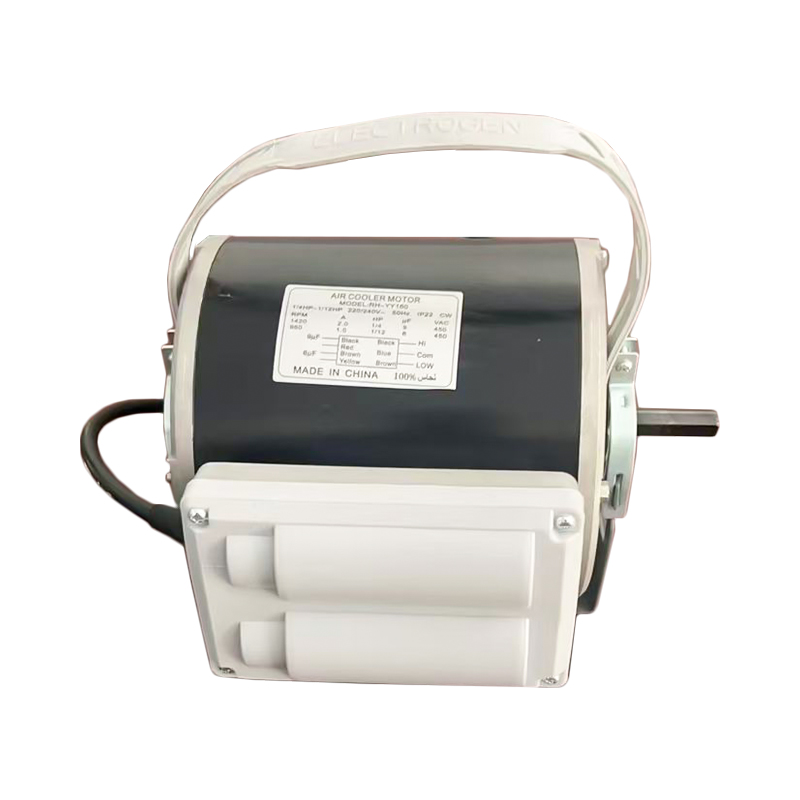
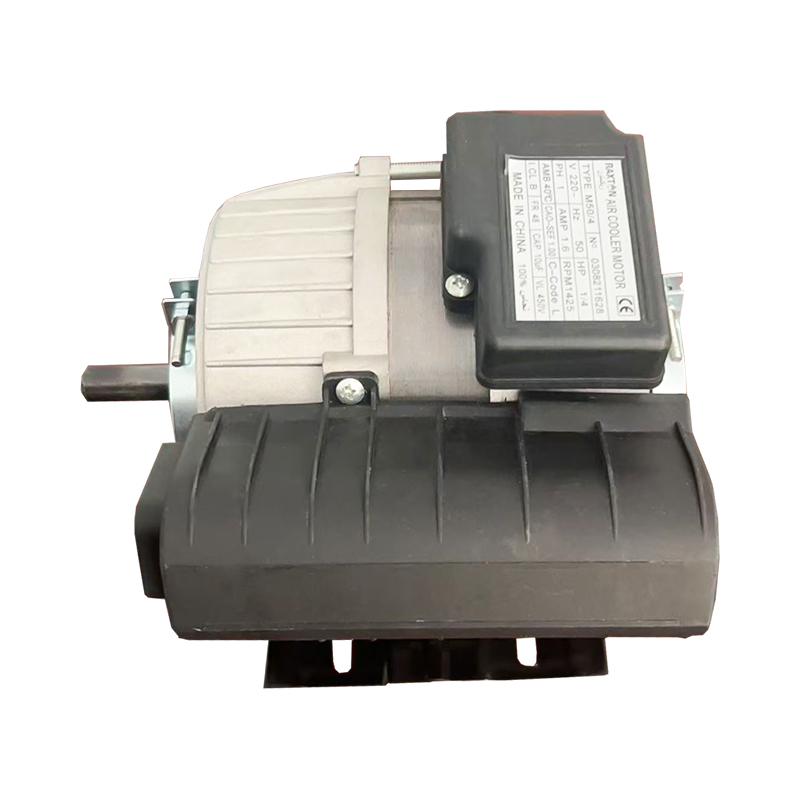
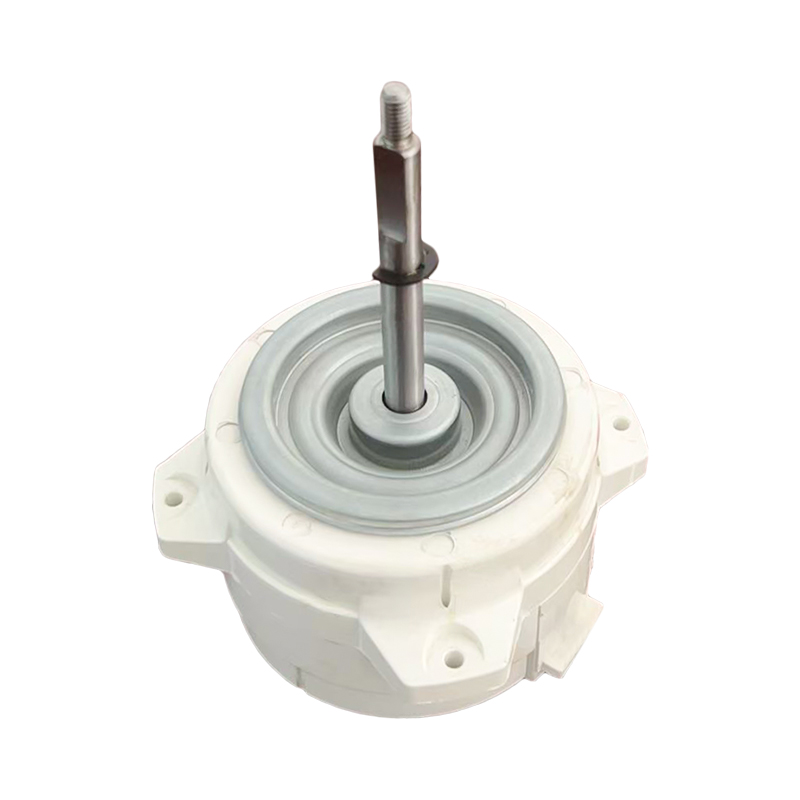
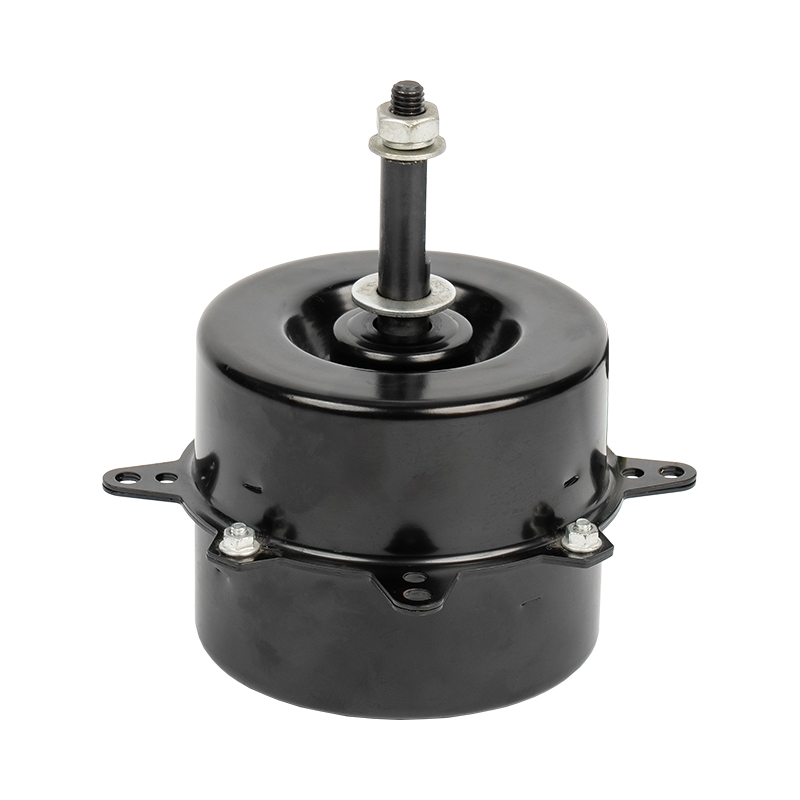
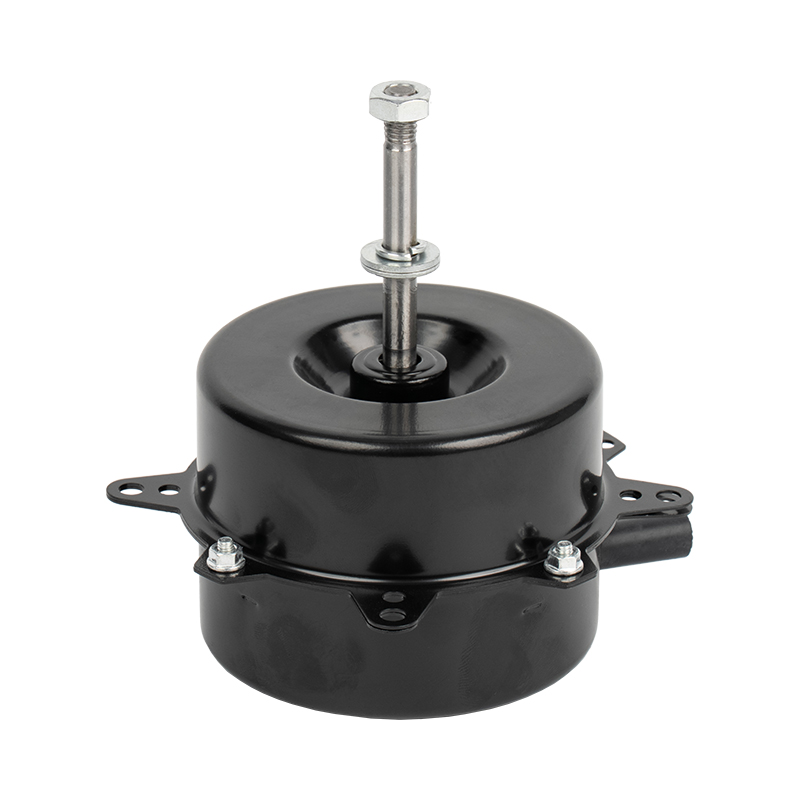
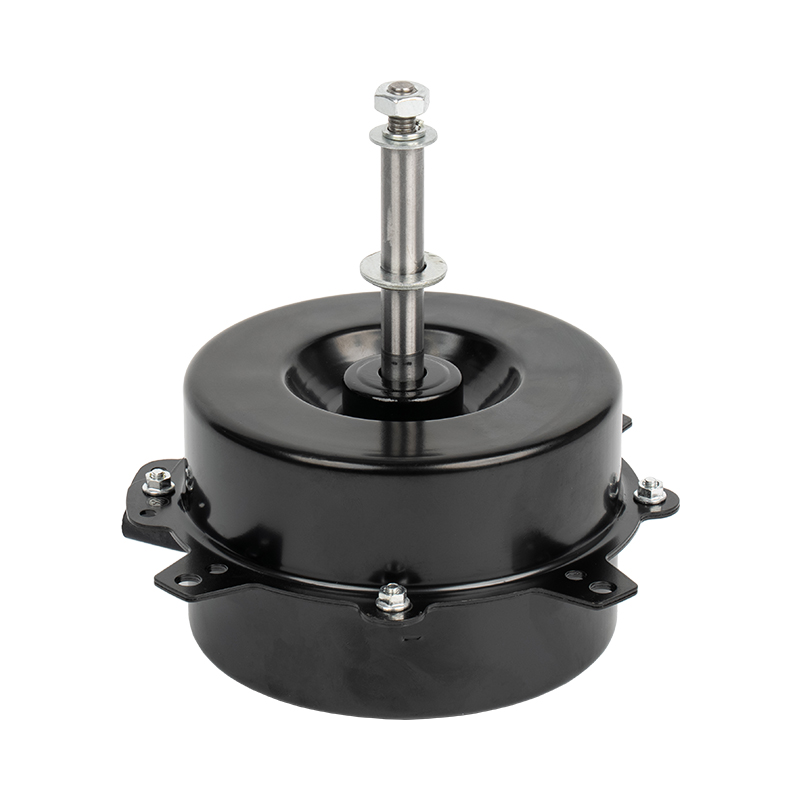
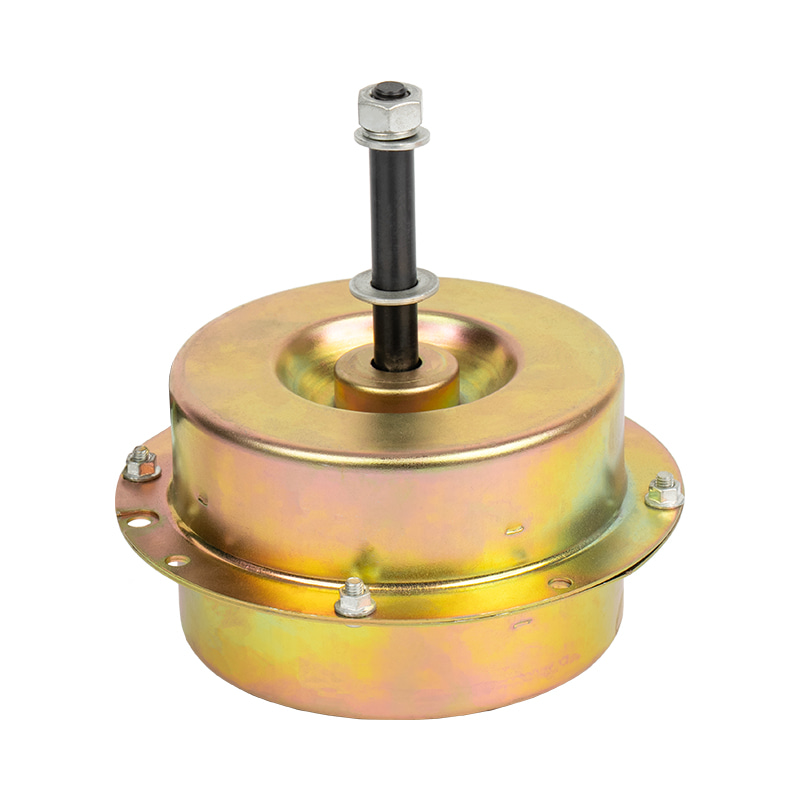
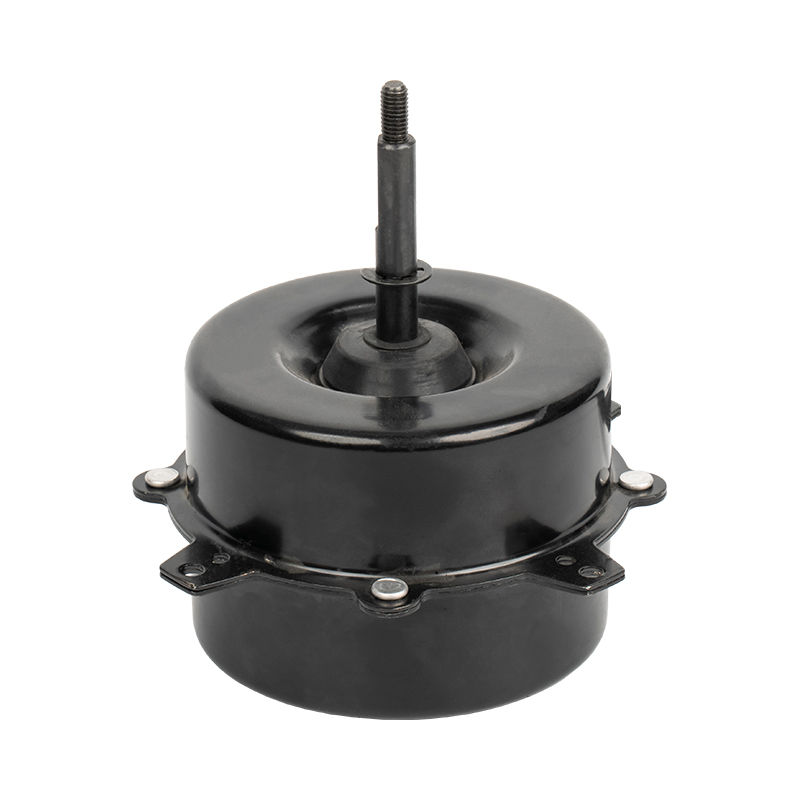
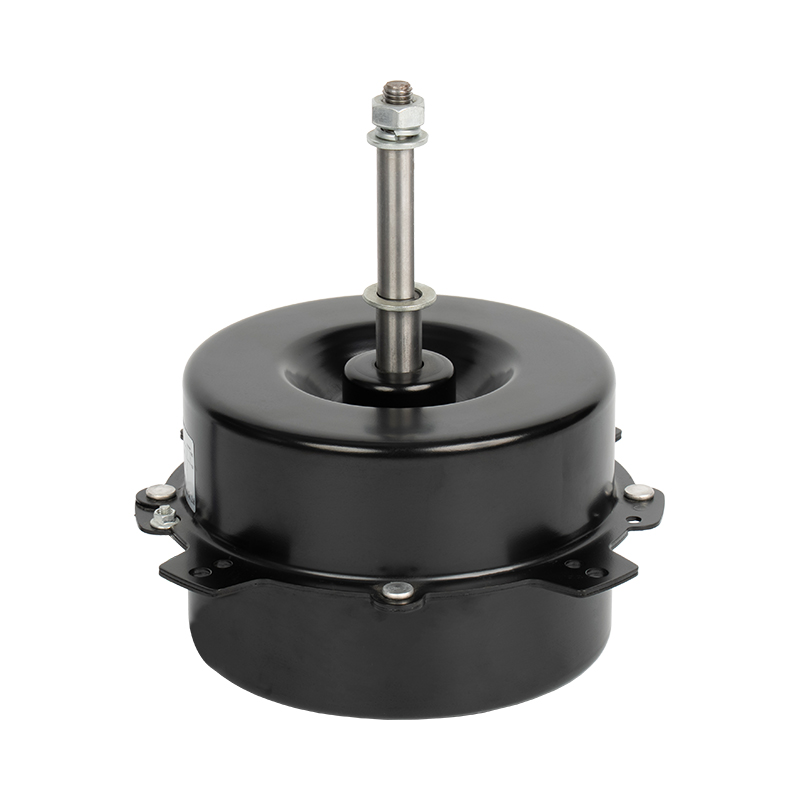
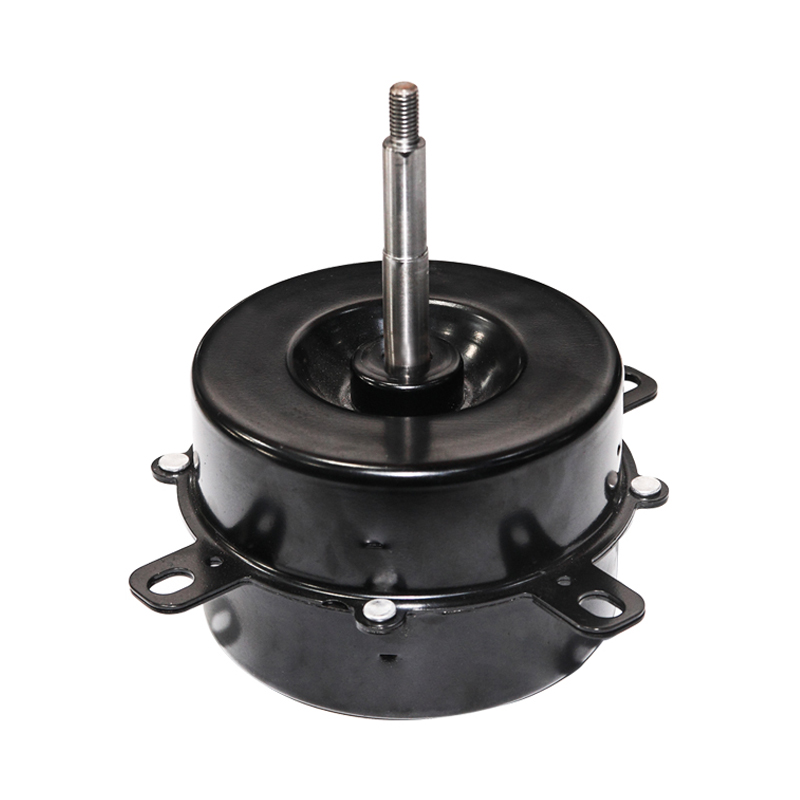
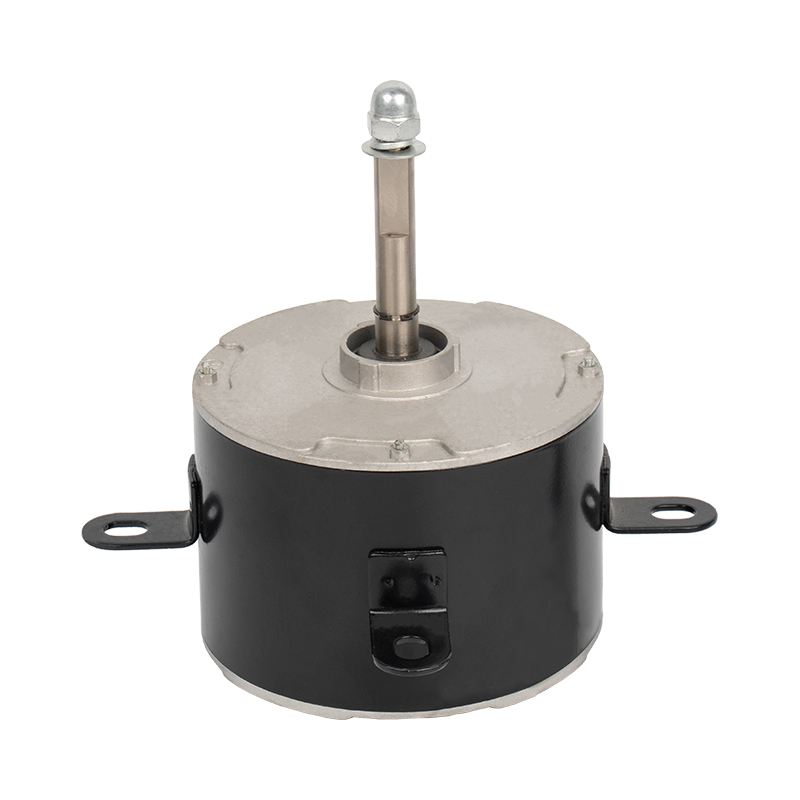
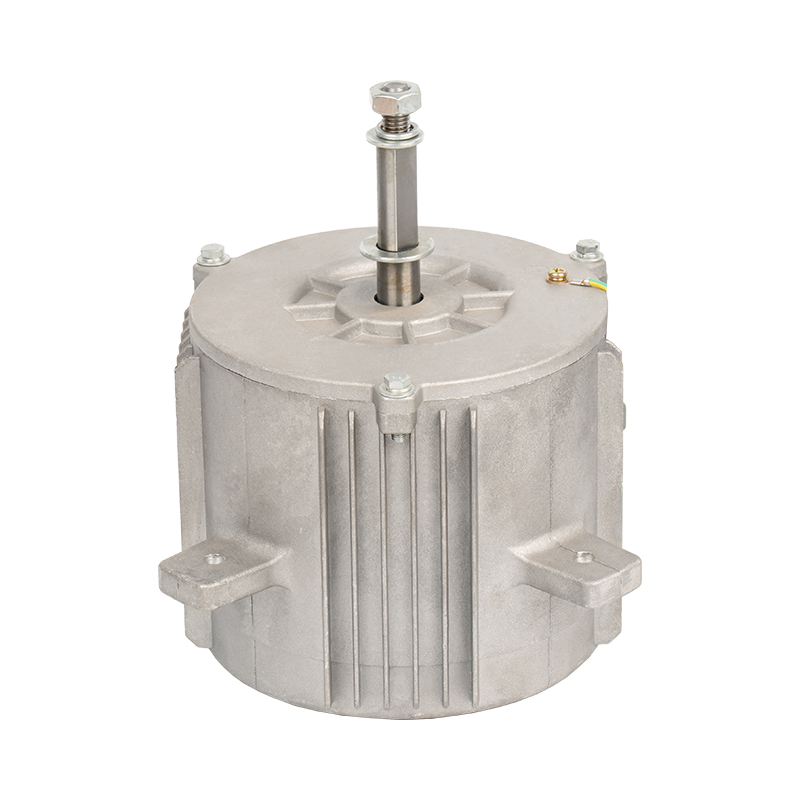


 Home
Home  Tel.: +86-13819807486
Tel.: +86-13819807486 Whatsapp:+86 13819807486
Whatsapp:+86 13819807486 E-mail:
E-mail: 



